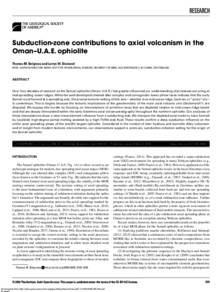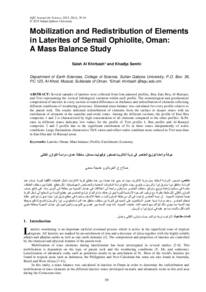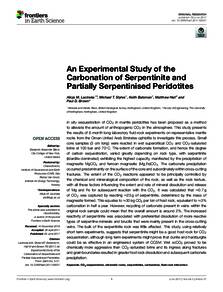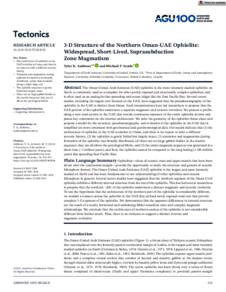Document
Subduction-zone contributions to axial volcanism in the Oman-U.A.E. ophiolite.
Identifier
DOI: 10.1130/L1045.1
Source
Lithosphere. v. 11, 3, p. 399-411
Contributors
Diamond, Larryn W. , Author
Country
United States.
Publisher
Geological Society of America.
Gregorian
2019-06-01
Language
English
Subject
English abstract
Over four decades of research on the Semail ophiolite (Oman-U.A.E.) has greatly influenced our understanding of processes occurring at fast-spreading ocean ridges. While the well-developed sheeted dike complex and comagmatic lower pillow lavas indicate that the early Semail crust formed at a spreading axis, the precise tectonic setting of this axis-whether true mid-ocean ridge, back-arc or "proto"-arc- is contentious. This is largely because the tectonic implications of the geochemistry of the main axial volcanic unit (Geotimes/V1) are disputed. We bypass this hurdle by focusing on intercalations of primitive lavas that are depleted relative to mid-ocean-ridge basalt and that are deeply intercalated within the early Geotimes axial volcanostratigraphy throughout the northern ophiolite. Our analyses of these intercalations show a clear trace-element influence from a subducting slab. We interpret the depleted axial melts to have formed by localized, high-degree partial melting assisted by a high-Th/Nb slab fluid. These results confirm a deep subduction influence on the entire axial spreading phase of the world's largest ophiolite. Considered in the context of later hydrous and boninitic Alley volcanism and of insight from modern tectonic environments, our observations support a proto-arc, subduction-initiation setting for the origin of the Semail ophiolite.
ISSN
1941-8264
Category
Journal articles




